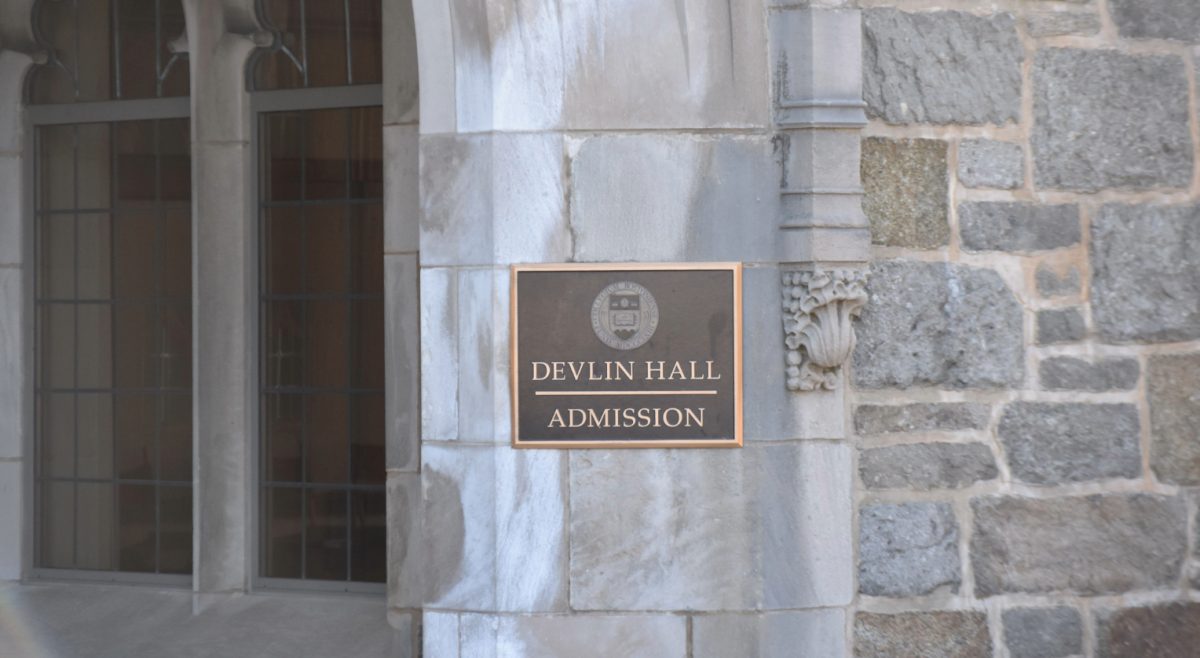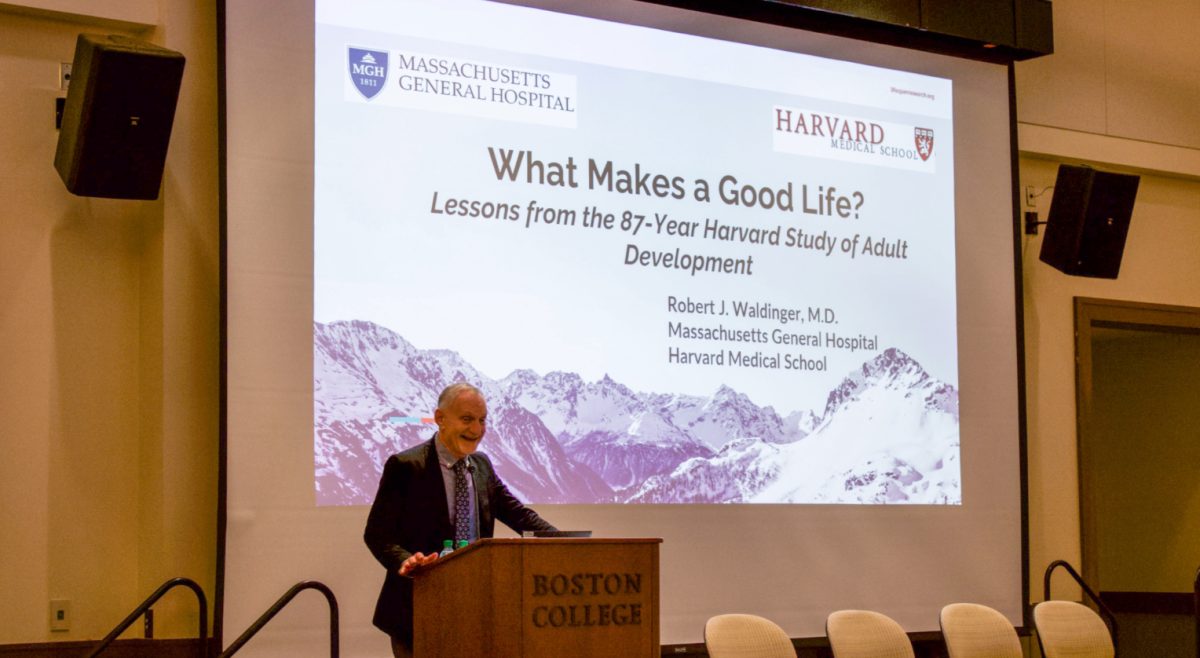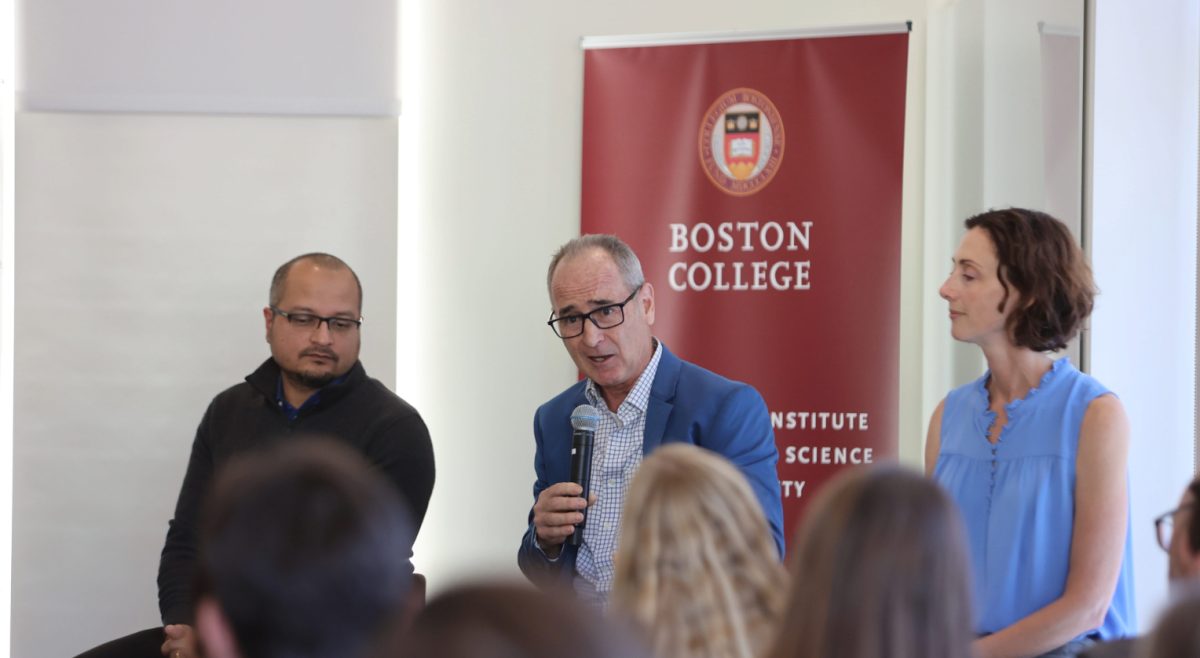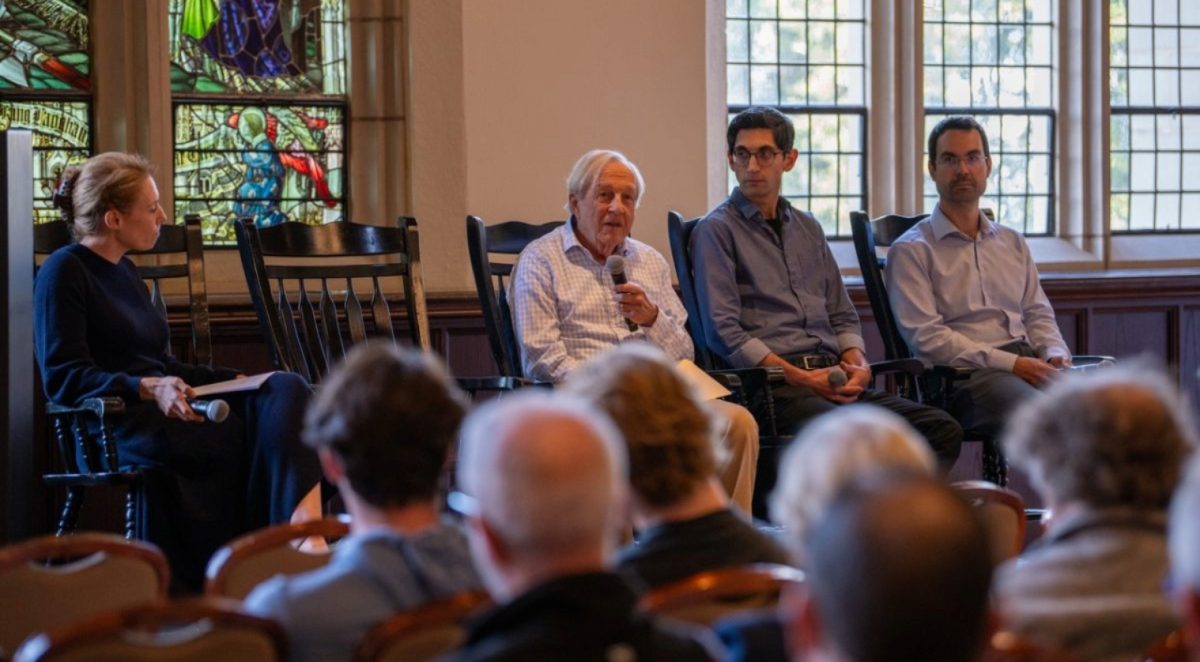The Class of 2017 was invited to set the world aflame last Thursday during the University’s annual Convocation ceremony. After the traditional torch-bearing procession on Linden Lane and walk down the Million Dollar Stairs, freshmen entered Conte Forum to hear Bill Strickland’s address.
Every spring, the Office of First Year Experience (FYE) convenes a group of faculty and administrators to pick a book for the incoming freshman class to read before arriving on BC’s campus. The author will then speak to the class during Convocation, building upon themes from his or her work. Past speakers include then-Senator Barack Obama (2005), Jeannette Walls (2007), and Colum McCann (2011).
Over this past summer, each student from the Class of 2017 was sent a copy of Strickland’s 2007 book, Make the Impossible Possible: One Man’s Crusade to Inspire Others to Dream Bigger and Achieve the Extraordinary. The book is a nonfiction account of Strickland’s work, beginning in 1968 when he founded the Manchester Craftsman’s Guild as an after-school arts program for Pittsburgh youth. Strickland is currently CEO and president of Manchester Bidwell, a nonprofit that provides art programs for disadvantaged youth and offers job training for adults over the age of 18.
“My past was really founded on the idea of the arts,” Strickland said. “I was a public-school kid not really doing that well in school, and an art teacher got me really excited about doing clay. I got pretty good at it, and he helped me get into college, because I was terrible academically-he gave me a lot of motivation, and I got into the University of Pittsburgh.
“Frank Ross, who was my art teacher, gave me the opportunity to really turn my life around, using the arts as the strategy to rebuild myself,” he said. “I wasn’t doing well academically, didn’t have much interest in anything-but through Frank and this kind of mentorship I had, he got me really excited about learning.”
Strickland was at University of Pittsburgh during the 1968 Hill District MLK riots. “While I was at college, it was during the riots-I wanted to help kids in the neighborhood, so I started a little arts program to do with those kids what Frank had done with me and public school. In 1968. And I’m still going, 40-some years later.”
Strickland explained the model for his centers, which won him a MacArthur Fellowship-commonly called a “genius” award-in 1996. “It’s two pieces: vocational education for unemployed adults, and arts education for the kids who are struggling in the school system-some people call them at-risk kids,” Strickland said. “The arts program is designed to take kids who aren’t doing well academically, get them re-engaged and learning through the arts, and what we’ve learned is that the kids’ grades start to improve pretty dramatically … the kids don’t necessarily become artists, that doesn’t matter. We use the arts as a hook to get the kids engaged in learning.”
The vocational program, on the other hand, works with unemployed adults who have either lost a job or never held a job. “We train them, up to one year, in a vocation-culinary, medical tech … and they go to work,” Strickland said. “And live happily ever after. We hope.”
Whereas the arts programs for students are scheduled after school, adults enrolled in the vocational programs show up at 8 a.m. every day, Strickland said.
Strickland emphasized that helping kids through the centers was a process, often a long one.
“You have to build world-class environments, they have to be well-equipped with faculty, and you have to be prepared to not give up on kids,” he said. “As long as they don’t give up on themselves, I think you have an obligation to stick with these kids, because sometimes they surprise you. Takes a few years for them to figure it out sometimes, but persistence and determination is more an attribute than anything else. This is not magic, it’s mainly hard work.”
Over 90 percent of students enrolled in the arts courses end up graduating from high school, and 85 percent end up enrolling in college or another form of higher education.
After working with students for 40 years, Strickland said that for this generation, things are comparatively worse. “School system’s gotten worse,” he said. “Literacy rates are lower … poverty has become more severe, drugs are a real serious issue, particularly in the inner cities.”
When asked what message he hoped to impart to BC students during his speech, Strickland laughed. “I want to recruit all of them to help me rebuild the world,” he said. “Seriously. I want to build 200 centers, working with poor folks, in 200 cities. So I need people to help me think that through, I need people who may want to sign up to help teach in these places, I want some of these guys to go get rich and give me some of their money so I can build centers-all of the above. Everybody’s got a role to play.”
There are currently seven centers open around the U.S., in Pittsburgh, San Francisco, Calif.; Cleveland, Ohio; Cincinnati, Ohio; New Haven, Conn.; Brockway, Penn, and Grand Rapids, Mich.
Another center will open in Buffalo, N.Y. in October, and on Oct. 10, the New England Center for Arts & Technology-an after-school arts program and job training center based on the Manchester Bidwell model-will open in Boston, bordering Dorchester, Roxbury, and the South End.
“We’ve got a lot of troubles in the world,” Strickland said. “Help to make the world less troubled in some way. Centers is certainly a good one-there are a thousand different ways you can help out. But you can’t just go here, get an education, get rich, and go live in some suburb and not give a s-t about anybody. You’ve got to really care, man. It’s important that everybody at least try to help. Because, you know, it ain’t happening, man-we’re losing too many kids. Fifty percent of kids aren’t graduating from the school system, so I want to help turn that around.”






